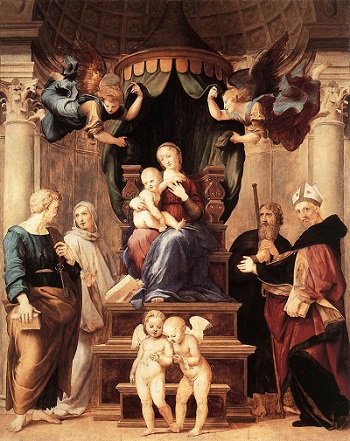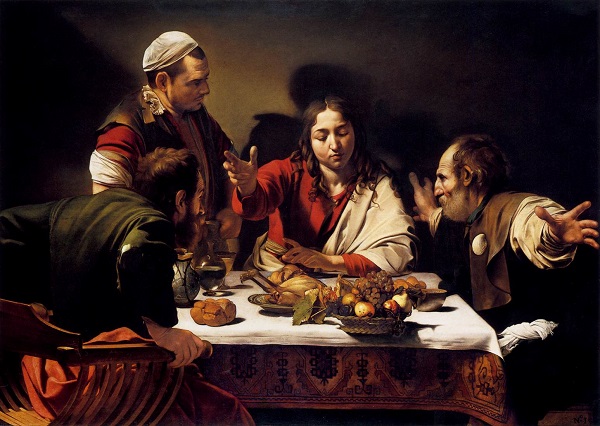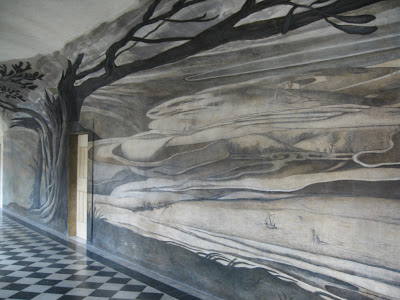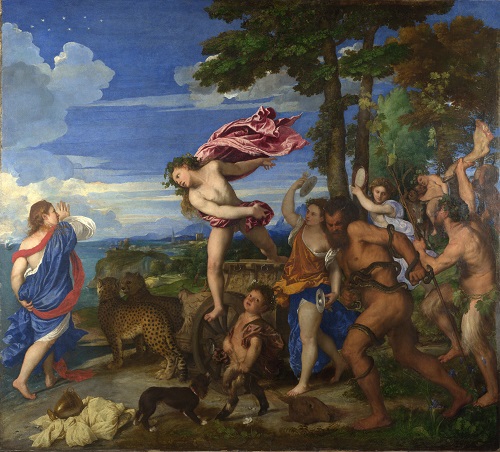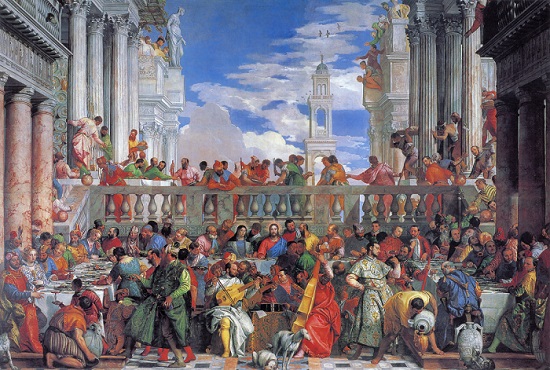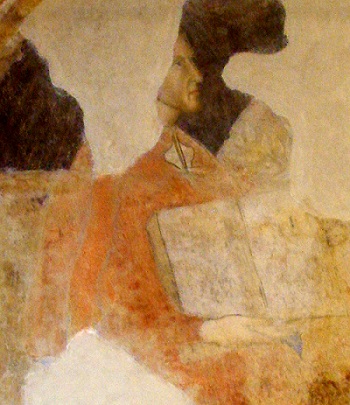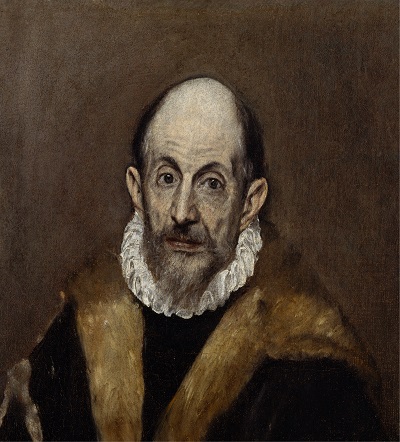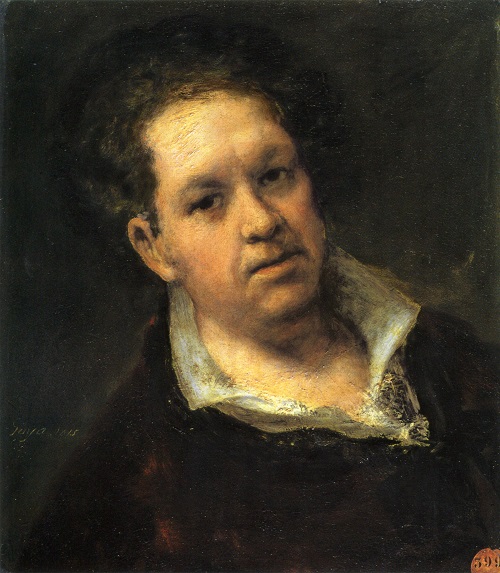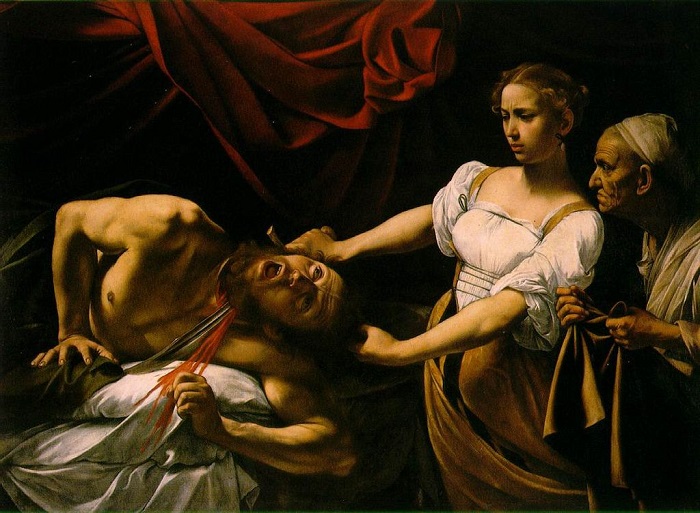
Judith and Holophernes (c.1598 – 1600) – Caravaggio (Oil on Canvas, 145 x 195cm – Galleria Nazionale, d’Arte Antica, Rome).
The deutero-canonical Book of Judith tells how Judith saved her people by seducing and killing Holophernes, the Assyrian general. Judith is invited into Holophernes’ tent and encouraged him to get drunk during a meal. She then seizes his sword and decapitates him: “Approaching to his bed, she took hold of the hair of his head, and said, Strengthen me, O Lord God of Israel, this day! And she smote twice upon his neck with all her might, and she took away his head from him.” (Judith, 13:7-8).
The beheading of Holophernes was a favourite subject of the age, with Donatello, Botticelli, Mantegna and Gentileschi, among others, all featuring this event. Caravaggio’s approach was, typically, to choose the moment of greatest dramatic impact, the moment of the decapitation itself. The figures are seemingly set out in a shallow stage, theatrically lit from the side, isolated against the inky, black background with a magnificent red curtain hanging above. It has been suggested that this curtain symbolizes both the bloody nature of the deed and Judith’s almost regal triumph. Judith and her maid Abra stand to the right, at arms distance from Holophernes, who is vulnerable on his back, unexpecting of the attack which was to come. X-rays have revealed that Caravaggio adjusted the placement of Holophernes’ head as he proceeded, separating it slightly from the torso and moving it slightly to the right. The faces of the three characters demonstrate his mastery of emotion, Judith in particular showing in her face a mix of determination and repulsion.
The model for Judith is probably the Roman courtesan Fillide Melandroni, who posed for several other works by Caravaggio around this time.
This is an extraordinarily powerful piece and whilst not perhaps as well known as some of his other work, such as Bacchus (c.1595), The Burial of Christ (c.1603), Boy Bitten by a Lizard (c.1595) and of course, David with the Head of Goliath (c. 1605-1606 or 1610) , to name but four of his works, it is nevertheless as mesmerizing as any other. To capture the abhorrence of the deed on Judith’s face as he has done is, makes her emotion almost tangible. The old maid beside her has such striking features and her clenched hand add to the tension of the image.
The light which captures the whiteness of Judith’s gown and the pureness of her skin are in such striking contrast to the bloody event which is taking place, and highlights even more the darkness surrounding Holophernes.
I think this is one of Caravaggio’s finest paintings.

